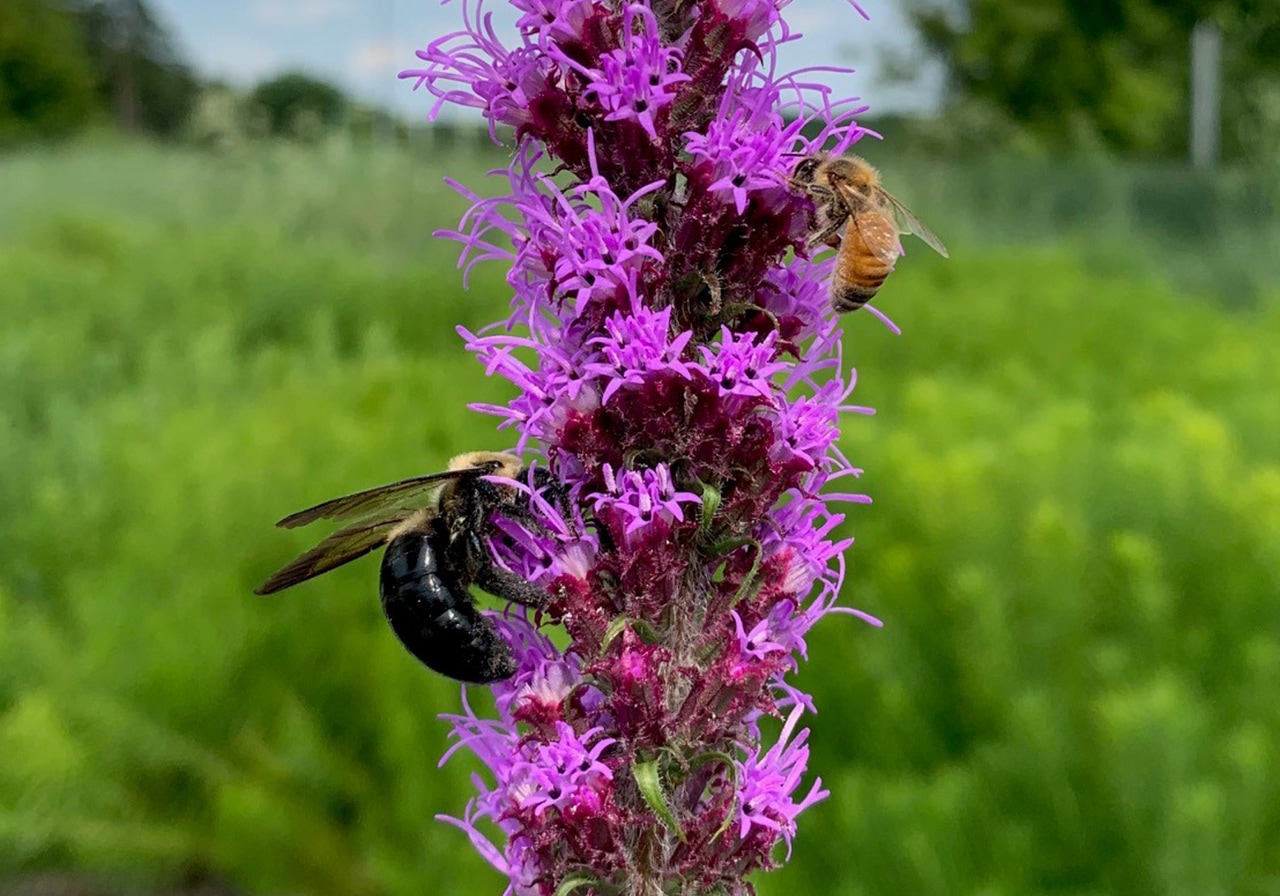Insects: The Museum Park’s Smallest Residents
[[translate(episode,'title')]]
[[translate(episode,'audioCredit') || translate(episode,'credit')]][[translate(episode,'title')]]
[[translate(episode,'audioCredit') || translate(episode,'credit')]]Audio Transcript
Many people find the creepy-crawly insects of the outdoors to be the thing of nightmares. However, they are actually an important and beneficial part of the Museum Park’s ecosystems.
The Park is home to many species of insects that maintain a thriving and beautiful environment.
There are a lot of dragonflies on campus, which is a special treat for dragonfly enthusiasts. These psychedelic flying insects stun in an array of colors, from bright blue ones, such as the great blue skimmer and azure bluet seen flying around water lilies in the Rodin Courtyard, to a wide variety around the pond, like the widow skimmer, with its translucent wings of black and bright white bands. In fact our pond is home to about 30 different species of dragonflies. In addition to being beautiful, these insects eat hundreds of mosquitos and biting flies each day.
As you walk around you may encounter a bright green praying mantis. Please don’t touch them. While they’re fascinating-looking creatures, they will give you an ornery look if you get too close.
The giant oak trees on campus can support hundreds of leaf beetles and their larvae, as well as different species of moths and butterfly caterpillars. One eye-catching creature is the polyphemus moth. It begins as a ridiculously large green caterpillar and eventually transforms into an equally big brown moth, with circles on its wings that resemble owl eyes. All of these insect larvae support birds like warblers, thrushes, vireos, and flycatchers.
Three species of milkweeds are curated in the Park to attract adult monarch butterflies to lay their eggs and host their caterpillars. Frequent visits to the Museum Park in the fall can increase your chances of seeing the entire transformation from caterpillar to chrysalis to adult monarch butterfly. Monarch butterflies born in the Museum Park will make the long journey to winter in Central Mexico.
And if you’re really observant, you may come across one of the most interesting-looking moths in the world. The snowberry clearwing is also called the flying lobster, because that’s exactly what it looks like. It has large clear wings and a red, fuzzy body and can be seen collecting nectar in the Park.
And it wouldn’t be a North Carolina park without an extensive spider collection. This state is fairly famous for its spiders, especially in the fall.
The red-femured spotted orbweaver creates a large circular web you’ve seen on your walks. These little creatures are nocturnal, but they might be seen coming out during the day to repair their intricate webs. Most days, though, this spider spends its time in trees curled up in silk on the underside of leaves, waiting for night to fall, when it will catch its prey.
The yellow garden spider is a brightly colored and patterned surprise if you see it in the wild. It may scare you, but if you’re brave, get close enough to admire the zig-zag pattern of its web, one of nature’s best works of art. The yellow garden spider is also called a “writing spider” and was the inspiration for the character of Charlotte in E. B. White’s Charlotte’s Web.
Another orb-weaving spider that might surprise you on your walk is the spiny-backed orbweaver. These spiders come in a variety of colors and look more like tiny crabs than spiders.
Pollinating insects play an essential role in fertilizing flowers needed for the production of agricultural food. Pollinators also support plant diversity in natural habitats. Butterflies and moths pollinate flowers accidentally by spreading pollen from flower to flower while collecting nectar, a sugary liquid within the flower. Bees are considered the most efficient pollinators because they visit flowers to gather pollen to feed their offspring, spreading more pollen as they move from flower to flower. There are over 500 species of native bees in North Carolina.
The Museum Park welcomes so many insects, from millipedes to bees, and we invite you to get to know them better so you will see them for the important role they play in the ecosystem.
